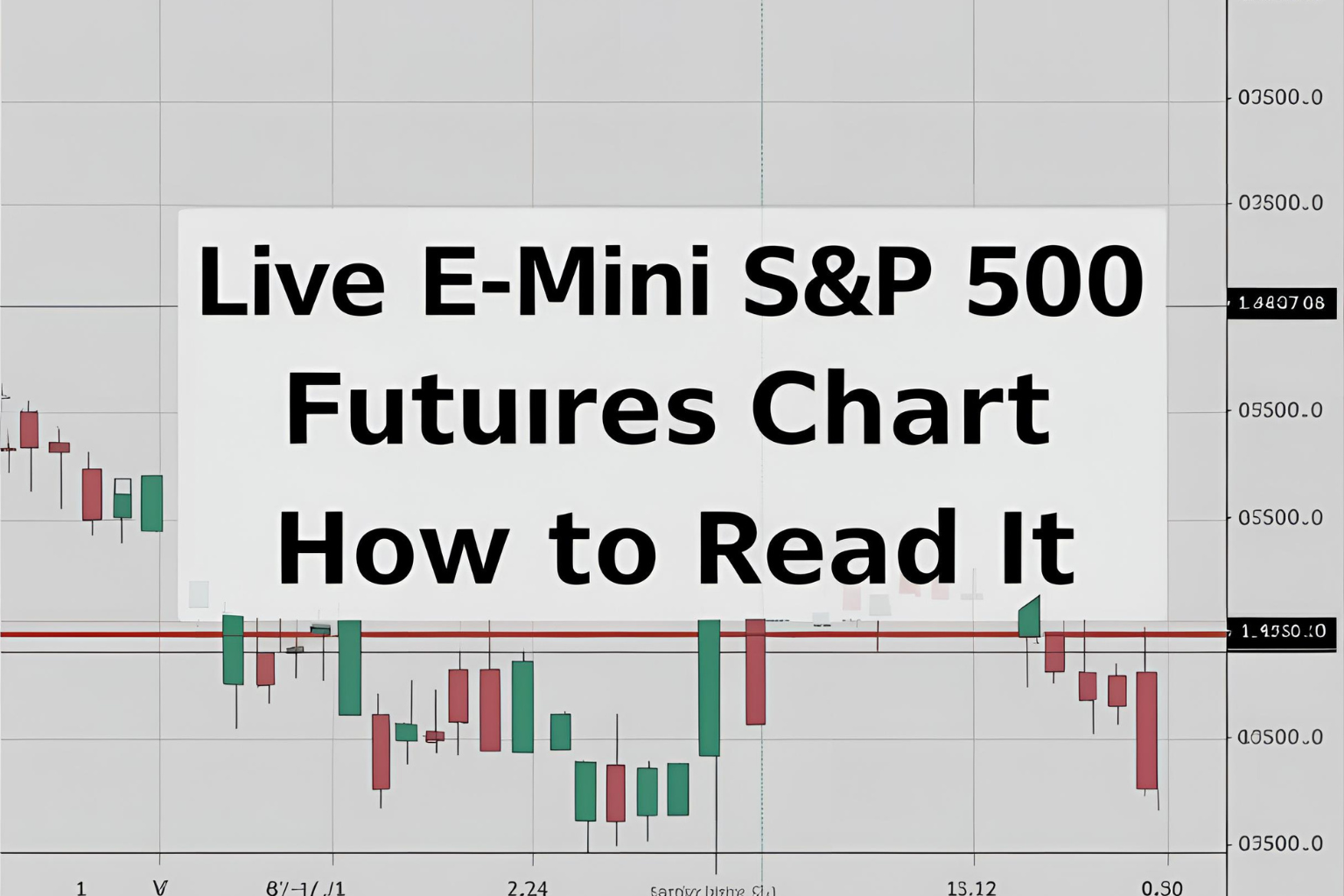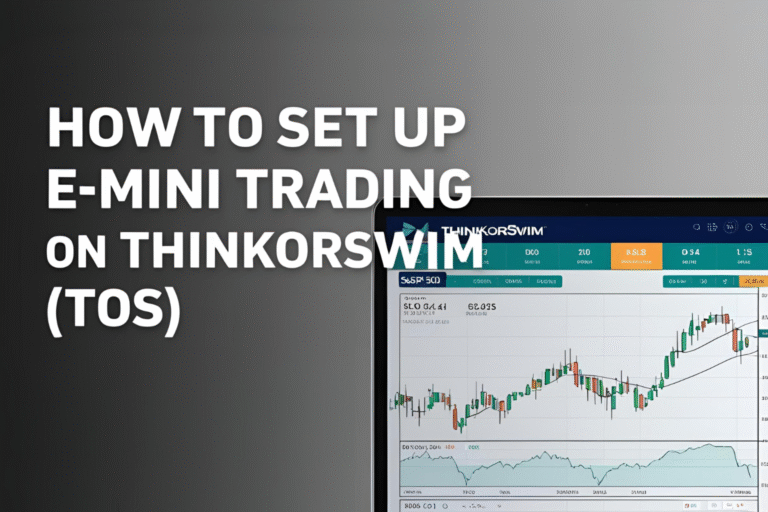Live E-mini S&P 500 Futures Chart: How to Read It
If you’re trading or learning about the E-mini S&P 500 (ES) futures, the live chart is your most important tool. Whether you’re checking price action on TradingView, your broker’s platform, or the CME website, this guide will help you understand what you’re looking at—and how to use it in real-time trading.
Let’s break down how to read and analyze a live E-mini futures chart, especially for Indian traders starting with Micro E-mini or full ES contracts.
What Is the E-mini S&P 500 Futures Chart?
The E-mini S&P 500 futures chart shows real-time price movements of the ES contract. This contract reflects the market’s expectations for the S&P 500 index, which includes 500 top U.S. stocks.
Chart platforms provide:
- Live price feed
- Candlestick or line chart
- Volume data
- Indicators and overlays
- Timeframes from 1-minute to 1-month
Where to View Live E-mini Charts
Here are top platforms for viewing and analyzing the ES chart:
| Platform | Notes |
|---|---|
| TradingView | Beginner-friendly, includes ES and MES symbols (delayed or real-time with subscription) |
| CME Group Website | Official exchange chart, accurate but limited in features |
| Interactive Brokers (TWS) | Real-time chart with order execution |
| ThinkorSwim | Advanced charting, suitable for U.S. accounts |
| NinjaTrader | For scalping and detailed order flow |
Key Chart Elements to Understand
1. Price Action (Candlesticks)
- Green = Price closed higher
- Red = Price closed lower
- Each candle shows Open, High, Low, Close (OHLC)
Choose 5-min, 15-min, or 1-hour timeframes depending on your strategy.
2. Volume Bars
Volume shows the number of contracts traded in that candle.
- High volume = institutional interest
- Low volume = choppy or consolidating market
Tip: Use Volume Profile to see where most trading activity occurred.
3. Support and Resistance Zones
Draw horizontal lines at:
- Previous day’s high/low
- Weekly high/low
- Round numbers like 4500, 4550, etc.
These levels often act as turning points or breakout zones.
4. Trend Indicators (Optional)
Common tools for beginners:
- 50 EMA – Trend direction
- VWAP – Intraday mean price
- MACD – Trend + momentum
Avoid overloading your chart. Start with 1–2 indicators only.
5. Contract Symbol for ES Futures
Use correct symbols to find the chart:
| Platform | Symbol |
|---|---|
| TradingView | ES1! or MES1! |
| Interactive Brokers | /ES |
| NinjaTrader | ES 06-25 (format changes by contract expiry) |
| CME | Just search “E-mini S&P 500 futures (ES)” |
How to Analyze the Chart for Live Decisions
Step 1: Choose a Timeframe
- Intraday: Use 1-minute, 5-minute, or 15-minute
- Swing: Use 1-hour, 4-hour, or daily
Step 2: Identify Key Zones
- Use previous day’s high/low, VWAP, and support/resistance
- Mark zones with rectangles or lines
Step 3: Watch for Patterns
- Flags, breakouts, double tops/bottoms
- Candlestick signals like pin bars, engulfing candles, inside bars
Step 4: Add Indicators (if needed)
- Use VWAP or 50 EMA for context
- Add MACD or RSI for confirmation
Step 5: Wait for Confirmation
Never enter on the first candle. Wait for confirmation of the breakout or reversal.
Live Chart Example (Walkthrough)
Let’s say the price on the 15-min ES chart breaks above 4500 with strong volume:
- Entry Signal: Bullish candle closes above 4500
- Stop-loss: Below the breakout candle low
- Target: 20–30 points or until price reaches next resistance (e.g., 4530)
This is a simple breakout strategy using the live chart.
Chart Settings for Beginners
| Setting | Recommendation |
|---|---|
| Timezone | Set to New York (EST) or India (IST) |
| Candle Colors | Green/Red or Blue/Red for clarity |
| Chart Type | Candlestick |
| Indicators | Max 2 to keep chart clean |
| Grid | Disable if distracting |
Final Thoughts
A live E-mini S&P 500 futures chart is your window into the U.S. stock market’s heartbeat. Whether you’re analyzing intraday moves or planning swing trades, understanding how to read and react to the chart is your key to success.
Start by observing. Don’t jump into trades. The more time you spend studying the chart, the sharper your intuition and decision-making will become.
FAQs
Q1. Is the chart real-time or delayed?
Most free platforms show delayed data (15–20 minutes). You’ll need a subscription for real-time CME data.
Q2. Which is better: ES or MES chart?
Both follow the same price. Use MES if you’re trading Micro contracts, but ES shows higher volume.
Q3. Can I use the same chart setup for swing trading?
Yes. Just switch to 4-hour or daily timeframes and widen your stop-loss accordingly.
Q4. Can I analyze the chart on mobile?
Yes. TradingView and Interactive Brokers offer mobile-friendly charting.
Q5. What should I do if I’m confused by the chart?
Keep it simple. Start with price action and 1–2 indicators. Over time, patterns become clearer.






